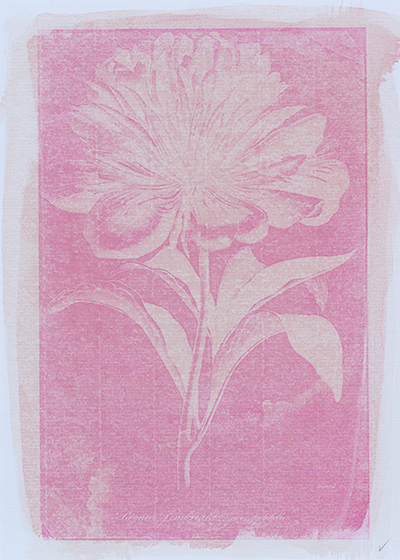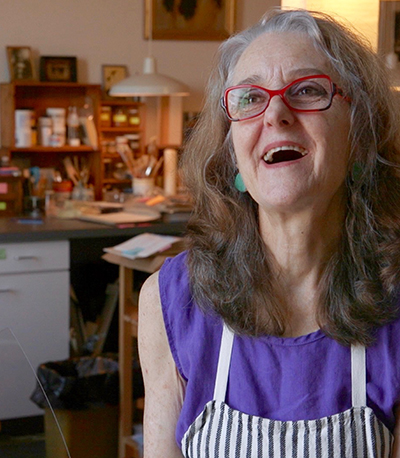
Workshop details: What is an anthotype? Literally a “flower picture,” from the Greek anthos (flower) and type (image), anthotypes result from a 19th century photographic process based on the light-sensitive characteristics of plants. Crushed berries, petals and roots yield emulsions which are then hand-applied to artists’ paper. Lengthy exposure (hours to days!) in the sun produce unique colored images. Due to its ephemeral and unpredictable nature, the anthotype lacked commercial viability and was largely forgotten after its invention in 1842. Because it is non-toxic, low cost, and magically simple, this obscure but poetic imaging method has been rediscovered and revived by artists around the world. A PowerPoint presentation, short videos, and resource list will explain the anthotype process in detail. We will also look at the exciting anthotypes being made today by sculptors, installation artists, painters, and book artists as well as photographers. In our first session, we will prepare emulsions and coat papers, then students will work independently for a week. In our second session, we will share work, trouble-shoot and experiment with split-toning, mixing emulsions and other variations. Learn about anthotypes in spring and enjoy a summer of plant-based printing!
Supply list: Various artists papers (white or pastel), foam or bristle brushes, a pencil and notebook, apron & gloves recommended, kraft paper to cover work surface, hairdryer or a clothesline in dark room, positives on film or acetate or other objects to “block light” such as lace and flowers, cardboard, a sheet of glass (can be from a store-bought frame), binder clips, culinary cheesecloth, paper coffee filters with funnel or coffee filter holder, various plastic containers with lids, white vinegar, rubbing alcohol, distilled water. Additionally, one of these: kitchen grater, or mortar and pestle, or blender, Cusinart, or juicer for larger quantities, and of course you will need the sun – this requires patience & ingenuity (dedicated anthotypists have put contact printers on the back of a bicycle, the back window of a car, on the roof/in the skylight of a building.) Supplies can be purchased on Amazon.

About the instructor: Jesseca Ferguson works at the intersection of 19th century handmade photographic processes, collage, and artists’ books. She has worked with handmade photography since 1990 and her most recent body of work emerged out of her explorations of the anthotype process. Her images and photo-objects have been published and discussed in numerous books, catalogues, and articles. In the US, her work is included in the collections of the Museum of Fine Arts, Boston and Harvard Art Museums, Cambridge, MA, among others. Internationally her work is included in the collections of the Book Art Museum, Łódż, Poland; Museum of the History of Photography, Kraków, Poland; The Fox Talbot Museum, Lacock Abbey, England, and Bibliothèque nationale, Paris, France. Her work has been supported by Art Matters, Inc., the Trust for Mutual Understanding (twice), the Engelhard Foundation, and MacDowell. Jesseca lives and works in a co-operative artist building located in the Fort Point area of Boston, MA. She received her undergraduate degrees from Harvard University and Massachusetts College of Art and Design and her MFA from Tufts University. Currently she teaches at the School of the Museum of Fine Arts at Tufts University (SMFA@Tufts).
